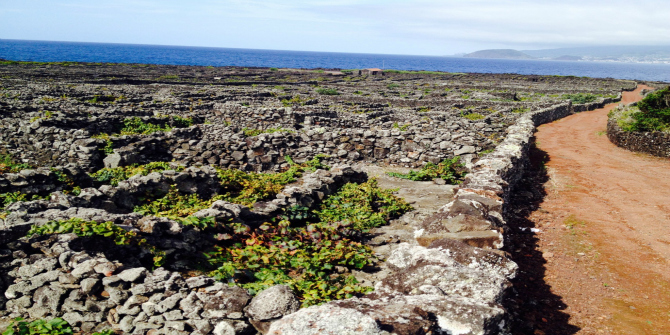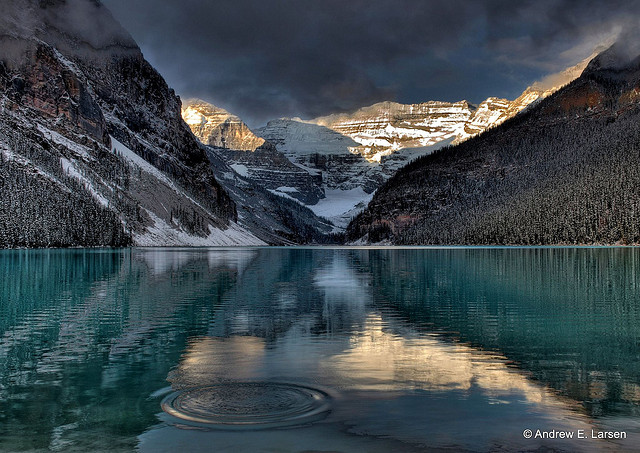From Crisis to Cosmos
From crisis to cosmos: could a shift in our values save the planet?
Guest Post by Maria Fernanda Gebara, author of forestless
Guest Post by Maria Fernanda Gebara, author of forestless
The roots of our ecological crisis can be found in the economic, political and social realities of modern industrial society, its organization of labour and methods of production. To turn things around, a total rethink of the traditional Western values that caused this crisis may be held to be the necessary response to fundamentally shift our attitudes towards the natural environment.
Some argue that the ecological crisis is a spiritual crisis1. Spirituality is a category of growing salience for many Westerners. While its genealogy remains complex and usage fluid, it has come to mean something specific, referring to what may be known, as ‘new age’ or ‘spiritual era’. Certainly, indigenous spirituality offers a valuable perspective from which to question and rethink traditional Western values. Indigenous narratives emerge from low-lying islands, the tropics and subtropics, where environmental vulnerabilities are acute. Those inhabiting these ecosystems are on the front lines of environmental change, despite often being invisible to the international community. The ways in which such communities navigate environmental change are often shaped by understandings of the ‘other-than-human’ world; understandings that, if not always recognized as spiritual, can certainly be described as cosmological or theological2.
 Around the world, indigenous peoples’ movements are protesting against how they, and their sacred landscapes, are impacted by imposed environmental change, normally originating from Western neoliberal policies. In Brazil, the president Bolsonaro’s government is being seen as the essence of a barbarism that for 519 years attempted to exterminate indigenous peoples from their lands. One million of the country’s 209 million inhabitants are indigenous, living on lands that occupy 13.3% of the country’s territory, mostly in the Amazon forest. Indigenous lands remain the forest’s main protective barrier. Last year, deforestation in the Amazon increased by almost 14% on the previous year, the highest rate in ten years. Yet the president, feeling legitimized by polls, attacked native peoples with policies that threaten their lives and rights. According to British NGO Global Witness, Brazil is already the most dangerous country for activists and environmental defenders: in 2017, 57 indigenous leaders, community activists and environmentalists were murdered for protecting the forest and traditional culture from threats like mining and agribusiness. Land conflicts have now increased and will likely get worse.
Around the world, indigenous peoples’ movements are protesting against how they, and their sacred landscapes, are impacted by imposed environmental change, normally originating from Western neoliberal policies. In Brazil, the president Bolsonaro’s government is being seen as the essence of a barbarism that for 519 years attempted to exterminate indigenous peoples from their lands. One million of the country’s 209 million inhabitants are indigenous, living on lands that occupy 13.3% of the country’s territory, mostly in the Amazon forest. Indigenous lands remain the forest’s main protective barrier. Last year, deforestation in the Amazon increased by almost 14% on the previous year, the highest rate in ten years. Yet the president, feeling legitimized by polls, attacked native peoples with policies that threaten their lives and rights. According to British NGO Global Witness, Brazil is already the most dangerous country for activists and environmental defenders: in 2017, 57 indigenous leaders, community activists and environmentalists were murdered for protecting the forest and traditional culture from threats like mining and agribusiness. Land conflicts have now increased and will likely get worse.
In a world where artificial intelligence, biogenetics, and very powerful interests are at play, learning to think critically through different ethical models and value systems is timely. We know we depend on our natural environment, that we have the power to destabilize it, thereby threatening our own species. Yet few of us are sensitive to our moral or ethical environment – the surrounding ideas we absorb around how to live. It is this that determines our beliefs; what we find acceptable or unacceptable, what we feel is due to us or from us, and how we relate to others and nature. It shapes our very identities, predispositions, roles and the reciprocal interactions between human beings and their social and natural environments; ultimately, determining our personal and planetary wellbeing. At stake here is not simply whether a tradition supports action on environmental change, but how a tradition’s ideas and values are mobilized to interpret the relations and responsibilities of a particular context. Such ideas and values establish our possibilities for environmental politics; although not always mapping neatly into distinct political positions, they help us interpret which policies seem more or less responsible.
In the past, religion was used to delineate “primitive” from advanced cultures, and thereby legitimate colonialism. It is sometimes still used in the postcolonial period to marginalize indigenous ecological knowledges (as sacred but not scientific) or treat relations with a landscape as individual spiritual experiences and, therefore, in the secular imagination, as inessential to political governance and portable across geography3. Many environmental thinkers consider the extension of sociability to non-human domains and persons as central to indigenous cosmologies, creating a moral field based on mutual obligations and respectful relationships4. Others, such as Sessions5, maintain that the anthropocentrism of the Judeo-Christian tradition – and its human mastery over an inanimate nature – represses the ecologically sustainable cosmographies of indigenous peoples. Some political scientists have suggested that the environmental antipathy of some American Evangelicals is tied up with “end times beliefs”6 .
With such reflexivity in view, scholars have begun to anticipate how contemporary environmental change may be stimulating religious and spiritual changes, and how this may affect human participation in ecosystems. Indigenous cultures implicitly locate human beings in larger social, as well as physical, environments. People belong not only to a human community, but to a community of all nature. Existence in this larger society, just as existence in a family and tribal context, places people in an environment in which reciprocal responsibilities and mutual obligations are taken for granted and assumed without question or reflection.
Spirituality, often experienced in and through relationship with nature, allows us to talk more broadly about such existence, and acknowledge what is strangely invisible, but necessary, if we want to rethink and shape our values. This may rest upon a renewal of humans’ connection to the natural world, one that can drive inward change within the human spirit. Such change, according to Pope Francis, is required to hear “both the cry of the earth and … of the poor”7. It is time to question old certainties, current ideologies and practices, seek intellectual justification for beliefs and practices, and discover new ways to align individual and planetary wellbeing with traditional values, so Western societies can be steered towards more sustainable lifestyles. As Powys Whyte observes, many indigenous peoples are already living their ancestors’ worst fears; with climate change, they must live through yet another period of settler-imposed environmental dislocation8. Finally, according to Danowski and Viveiros des Castros9, if “the Anthropocene is the Apocalypse” then, “indigenous people have something to teach us when it comes to apocalypses…for the native people of the Americas, the end of the world already happened – five centuries ago.”
For more content from Maria Fernanda Gebara, please visit her blog at forestless.
Cited Sources:
1. Vaughan-Lee L. 2013. Spiritual Ecology: The Cry of the Earth. California: The Golden Sufi Center.
2. Jenkins et al. 2018. Religious and Climate Change. Annual Review of Environment and Resources 43:9.1–9.24.
3. Weaver J. 2015. Misfit messengers: Indigenous religious traditions and climate change. Journal of the American Academy of Religion 83(2):320–35.
Howe N. 2016. Landscapes of the Secular: Law, Religion, and American Sacred Space. Chicago: Chicago University Press.
Tsotie R. 2013. Climate change and indigenous peoples: Comparative models of sovereignty. Tulane Environmental Law Review 26(2):239–58.
Howe N. 2016. Landscapes of the Secular: Law, Religion, and American Sacred Space. Chicago: Chicago University Press.
Tsotie R. 2013. Climate change and indigenous peoples: Comparative models of sovereignty. Tulane Environmental Law Review 26(2):239–58.
4. Kimmerer R. 2013. Braiding Sweetgrass: Indigenous Wisdom, Scientific Knowledge and the Teachings of Plants. Minneapolis, MN: Milkweed Editions.
Escobar A. 2016. Thinking-feeling with the Earth: Territorial struggles and the ontological dimension of the epistemologies of the South.
Revista de Antropología Iberoamericana 11 (1): 11-32.
Escobar A. 2016. Thinking-feeling with the Earth: Territorial struggles and the ontological dimension of the epistemologies of the South.
Revista de Antropología Iberoamericana 11 (1): 11-32.
5. Sessions G. 1995. Deep Ecology for the 21st Century. Boulder, CO: Shambhala Publications.
6.Barker D and Bearce D. 2013. End-times theology, the shadow of the future, and public resistance to addressing global climate change. Political Research Quarterly 66(2):267–79.
7.Francis I. 2015. Laudato Si—On Care for Our Common Home. Vatican City: Vatican Publications. 49.
8. Whyte K. 2017. Our ancestors’ dystopia now: indigenous conservation in the Anthropocene. In: Heise, J Christensen and Niemann M (eds.) Routledge Companion to the Environmental Humanities, 206–15. London: Routledge
9. Danowski D and Viveiros des Castros E. 2016. The Ends of the World. Translated by Nunes RG. Malden, MA: Polity. 104.











